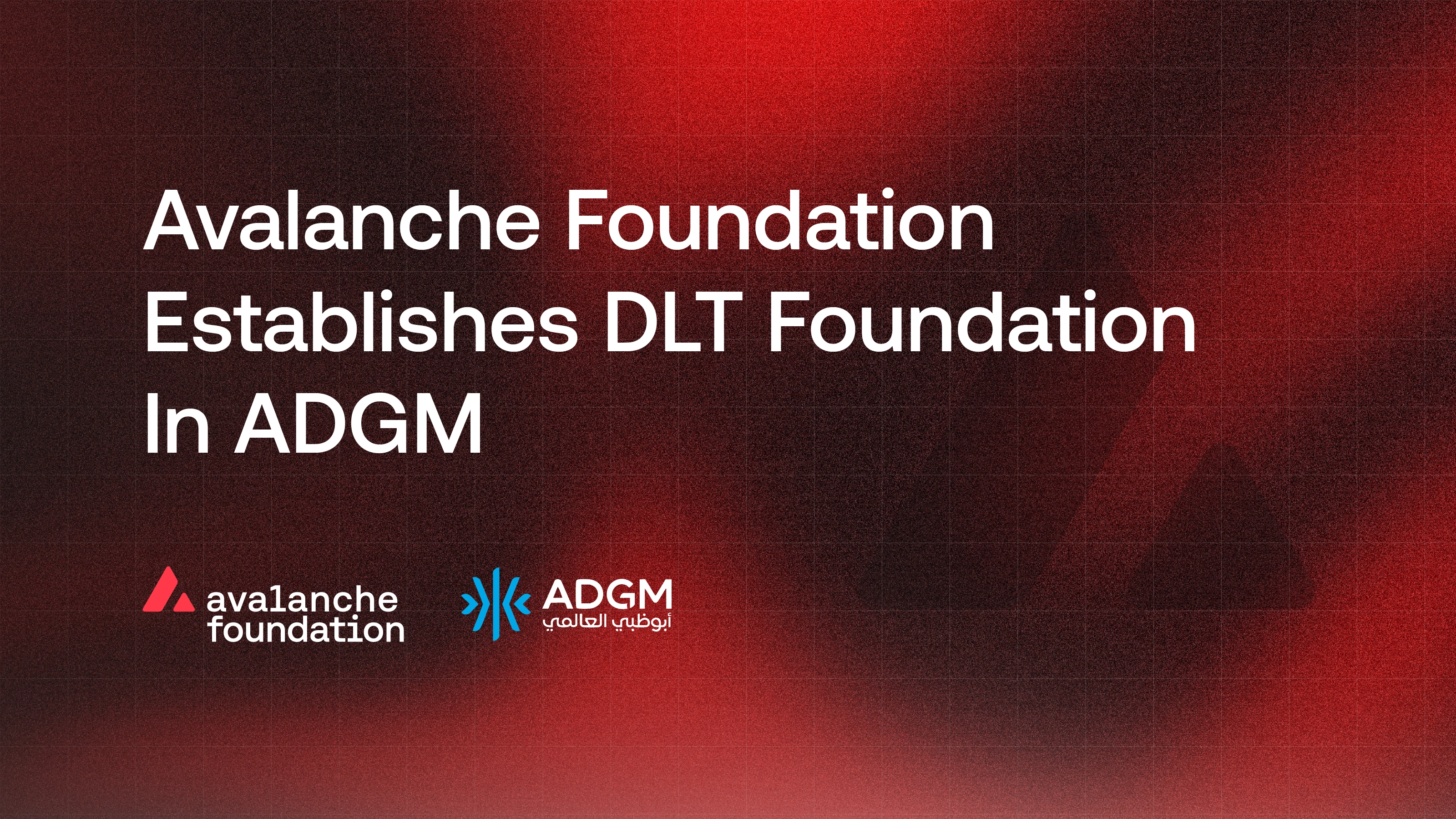Where Is Crypto's "Facebook Moment"?
Where Is Crypto's "Facebook Moment"?
May 9, 2025 / By Avalanche / 8 Minute Read

A next-gen investor on the importance of effective storytelling and real barriers to Web3 consumer adoption.
In what seems like a lifetime ago, Vera Im received some Bitcoin from a self-described “Bitcoin Jesus” figure in 2018. While most of her peers were focused on traditional career paths, this development shifted things for Im. She was initially half-skeptical but then her modest crypto holdings began to grow.
Looking back on those early days, Im, who is a Senior Investment Associate for the Blizzard Fund, a $200 million ecosystem fund as of May 2025, now sees that initial exposure as the first step in what would become a winding path to crypto venture capital. Today, she's part of a new generation of investors bringing fresh perspectives to Web3's most persistent challenges–tackling one of the industry’s “white whales” to expand meaningful consumer adoption.
From Startup Struggles to Investment Insights
Im's journey to Web3 investment began far from the world of venture capital. Originally from South Korea, she came to the United States for college, studying economics at Brown University, before joining an early-stage startup in New York. "I was at a very hungry startup that was desperately raising capital," Im recalls. "At one point I was even doing payroll, which was definitely not what I was supposed to be doing."
That multiple-hat-wearing experience gave Im critical perspective that still informs her investment approach. "It was interesting to see the opposite of what I'm doing right now. Currently I'm looking into startups to invest in, but back then I was on the other side. I think it gave me insight into what startups actually go through."
After stints including a brief and unfulfilling period as a product manager at a traditional finance ratings company, Im's path took an unexpected turn when she moved to Miami during the pandemic. There, she connected with artists exploring NFTs and blockchain technology, which rekindled her interest in crypto. After moving back to NYC after the pandemic, Im first discovered Avalanche at one of its summer events in Brooklyn. When an opening appeared at Ava Labs, Inc., Im seized the opportunity and landed the role where she's been for nearly three years.
Waiting for Web3's Facebook Moment
From her vantage point evaluating early-stage crypto projects, Im has a strong perspective on why Web3 continues to struggle with mainstream consumer adoption. Despite years of promises that gaming, social applications, or other sectors would finally bring "a billion users" to crypto, the breakout moment remains elusive.
"We need to have a Facebook moment to onboard people," Im explains. "Facebook really had that moment in Web2 where everybody got on it, and if you didn't do this thing, you were missing out. This wasn't just in the United States but all over the world. Even in Korea, this was happening."
Im believes the right consumer application needs to reach a level of accessibility where "even my mom can use it," noting that her own non-technical mother comfortably uses Instagram and Facebook because they've made onboarding so intuitive. Part of the success of Facebook is the time that its platform has been given to mature in the public imagination. Far too many Web3 applications have been rushed to market and not given adequate time to establish strong roots.
While some projects like Gunzilla have shown promise by onboarding millions of users, Im points out that Web3 has been talking about “gaming as the pathway to mass adoption for four or five years now, but without delivering the promised results–at least until recently.”
The Problem with Problem-Solving
A number of Web3 founders are trying to solve problems that don't actually exist or aren't pressing enough to drive mass adoption. "So many people are entering the space thinking, 'Maybe if I just do a simple reiteration of this other project that was successful, I could make some quick money too,'" Im says. "That doesn't pave the way for founders that are truly immersed in a problem area to come up with a solution that is grounded in the problem."
This creates a cycle where some projects focus on extracting value rather than creating it. Im compares what’s happening to Hollywood's obsession with remakes of old films. "I don't think there's anyone out there thinking, 'I am dying to see another iteration of Snow White.' Nobody's thinking this," Im says. Similarly, consumers don't want another version of something they already have. They want something that will "either improve some aspect of their lives or something entirely new that will really excite them and pique their interest."
The Missing Feedback Loop
A critical gap Im identifies in Web3 product development is the lack of robust user feedback mechanisms. Too many projects, she observes, are built in isolation without sufficient input from the people who will actually use them. "There has to be more interviews with potential users or actual users," Im insists. "Talking to investors, talking to your team, that's all great, but at the end of the day, those are not the people that you're serving. Your users are the true audience."
This disconnect often results in products with confusing interfaces and terminology. This is a surefire way to alienate mainstream users. "A lot of stuff that's built is for a very specific group of people who are very Web3 native," Im notes. "Even the naming conventions and the words used in the UI and on project websites. If I showed some consumer crypto projects to my non-Web3 friends, they would have no idea what half the words mean."
This goes back to the user feedback loop - “I’d really like to see more projects who have fully gone through numerous iterations and pivots based on user interviews and feedback, even more than the ‘perfect roadmap,’” Im says. “I do think a great product will likely have multiple versions, and it may not even be what the founders set out to create in the beginning.”
An Inflection Point for the Masses
Despite these challenges, Im believes there are promising projects with potential for mainstream impact. The problem is visibility. "There are an incredible number of really amazing founders in Web3," Im emphasizes. "But they often get overshadowed by other actors that don't necessarily have the best intentions."
According to Im, the extractive nature in some parts of the industry, along with the outsized media attention given to price movements and scandals, creates a veil that hides truly innovative projects from reaching broader audiences.
"A lot of the big narrative and press that crypto gets in the real world is essentially 'Bitcoin's down' or 'there was a scam where people lost money,'" Im explains. "It just doesn't pave the way for projects to have a positive impression on people. A lot of my ‘normie’ friends are still hesitant to touch anything remotely adjacent to Web3, other than buying BTC."
She notes that finding projects that combine a great product that solves real problems and the marketing savvy to break through the noise and get to market remains a rare combination in the current landscape. This will need to change if Web3 is going to reach an inflection point of new consumer adoption.
Im sees signs that this turning point may be approaching — driven not just by internal progress within Web3, but by external forces like the rapid rise of AI. “AI has already had its ‘Facebook moment’ with the explosive popularity of ChatGPT,” she says. “Now, with the advancement of autonomous agents, we may be nearing what I think of as the ‘Instagram moment’ — a second breakout phase where consumer tech adoption accelerates even further.”
As these agents evolve, Im explains, they will require financial infrastructure to operate independently in the real world — a role that crypto rails are uniquely positioned to fill. “The stage is set for a superapp that bridges AI and crypto, and that convergence could finally catalyze the mass adoption moment Web3 has been waiting for,” she says.
The Power of Storytelling
The power of effective storytelling can’t be overlooked as a key factor in driving adoption. "Many people underestimate the value of a story," she observes. "A lot of people are very focused on the wrong story or the wrong part of the story." This affects not only how products are positioned to consumers, but also how they're covered in the media. In an environment where everything must be condensed to headline-worthy sound bites, nuanced projects that require deeper understanding often struggle to gain traction.
Im is optimistic about the potential for meaningful consumer adoption in Web3. Mogul Club is an example of a project that is effectively using crypto infrastructure to enhance both business models and consumer experiences. At the same time, she's vigilant about questioning when blockchain technology is genuinely necessary. "I do see projects where I literally have to ask them, 'why blockchain?' or specifically, ‘why a token?’" she says. "A lot of times it's just for the buzzword to raise capital."
The path forward requires identifying and supporting founders who are focused on solving genuine problems rather than chasing trends or financial extraction. These builders, she believes, are the ones who will eventually deliver the applications that make Web3 relevant to mainstream users. As the industry continues to evolve, Im's unique perspective, which is shaped by her experiences on both sides of the startup funding equation, will continue to provide valuable insight into the great challenge of Web3’s long-promised consumer breakthrough.




